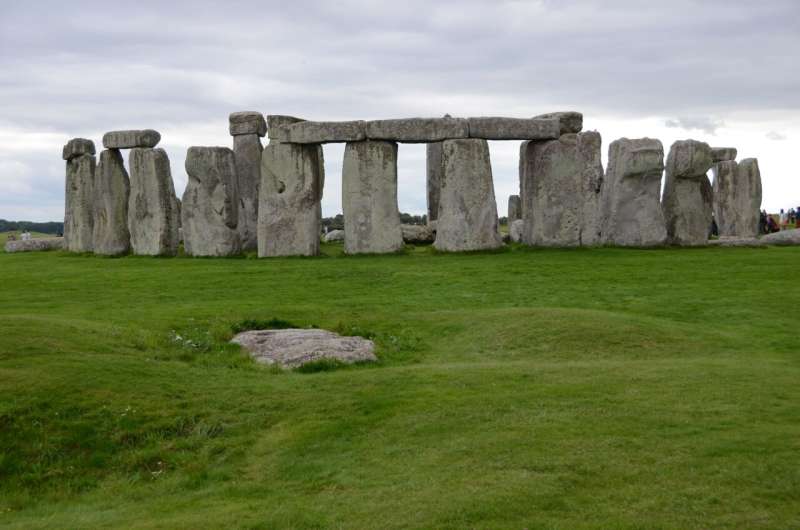A team led by researchers from the Department of Geography and Earth Sciences at Aberystwyth University (UK) has solved the mystery of Stonehenge 80, also known as the “Altar Stone”, suggesting that it does not come from the same source as the other stones. used in construction. Most of the smaller stones are believed to have been quarried from a source 240 kilometers away from Stonehenge, but the altar stone is different and may have been quarried much further away.
The research team published “Stonehenge Altar Stone Likely Not Derived from Ancient Anglo-Welsh Basin Red Sandstone: Is It Time to Expand Our Geographical and Stratigraphic Horizons?” published in the Journal of Archaeological Science. In the article, the research team details how the final theory came about.
The Altar Stone at Stonehenge is a unique stone among bluestones due to its sandstone composition, which contrasts with the predominantly igneous bluestones that form the inner circle of Stonehenge. The blue stone belongs to the smaller stones of Stonehenge that take on a blue hue when wet.
Previous theories suggested that the Altarstone, like other bluestones, came from the Old Red Sandstone Formation in West Wales, specifically the Mynydd Preseley area in West Wales.
The Old Red Sandstone Formation was formed by the collision of what is now Europe and North America about 400 million years ago. Some of this education can be found on both sides of the Atlantic and even as far north as Greenland and Norway.
To determine the origin of the altar stone, the researchers performed a variety of analyses, including optical petrography, portable X-ray analysis, automated SEM-EDS analysis, and Raman spectroscopy of samples taken from the Old Red Sandstone Formation in the Anglo-Welsh Basin. One of the important features of the Altarstone is its high barium content, which distinguishes it from many other basin and bluestone samples.
The results show that the altar stone’s barium content is unusual. Although various examples of basin formations overlap in composition, it is not taken into account that they belong to the same source as the altar stone due to the contrast in their mineralogical composition. This raises doubts about the origin of the Altarstone in the Anglo-Welsh Basin, indicating that the search should be extended geographically and stratigraphically towards the north of Britain and the possibility of finding younger sandstones considered.
Bluestones, mostly of igneous origin, were originally called “foreign stones” by Stonehenge’s early archaeologists because they differed from the more significant sarsen stones of local origin. The local source of the large stones used in the building is believed to be 15 miles away; The density of over 55 metric tonnes per stone is still quite remarkable and reveals the profound importance of the region where the quarries were quarried.
Most of the bluestone was transported to Mynydd Presely in West Wales, 140 miles west of Stonehenge; this is one of the longest known transport distances from the source to the monument’s construction site anywhere in the world.
Based on their work, the researchers suggest that the Altarstone should be “classified” as a bluestone, breaking the connection with the Stonehenge bluestones recovered from Minidd Preseli. If this is true, research into the origin of the altar stone has only just begun.
What is the meaning of Stonehenge?
Although many astronomical theories have been proposed and refuted over the years, archaeologists have confirmed one fact: for 5,000 years, this structure had many accepted meanings. If there is a place to bury the dead, a place for sacred healing, a place for contemplation and a Druidic or other local tradition.
Undoubtedly, all kinds of rituals took place among the stones; Among these is the modern tourist ritual of taking selfies. Whatever the original intent, Stonehenge’s legacy lies in the endless wonder, mystery, imagination and holiday snaps it offers.













